It’s a gorgeous sunny afternoon. I’m in a Puerto Rican restaurant with my ex-girlfriend and she’s asking the server what’s in the Mofongo. The conversation is like something out of a movie, “Is it made with meat or vegetables,” asks Karen. “Yes,” says the enchantingly accommodating server. Neither of them has any idea what’s going on in the conversation and I eventually get bored enough to start staring at Karen’s shoes. She’s wearing Mary Janes. I’m confused.
“What’s with your shoes?” I ask. My ex is butch. She might be a prissy French teacher who spends all her time reading Baudelaire but she’s butch nonetheless. Certainly too butch for Mary Janes. “Weird,” I say.
“So, what, you think these are too girly?” And I think to myself, “Yeah.”
But am I a jerk for thinking she’s wearing girly shoes? What’s going on here? She’s still butch. Her shoes don’t change her gender, she’s like half a dude. She could be wearing Manolo Blahniks and still be butch.
It’s just that I have an expectation of what it means to be butch, and that expectation doesn’t include Mary Janes.
After lunch I’m reading a story in the news about a gender activist named Norrie May-Weldon. She’s become the first person to be legally recognized as genderless. May-Weldon’s birth certificate was altered by the Australian government and lists hir gender as “not specified.” Unfortunately the correction may not stick as it seems that, in light of the international attention the story received, Australia is doing a sort of “Oops, our bad” kind of thing and now wants to list May-Weldon as either male or female. For the record I’m using the gender neutral pronouns hir and ze here because, well, we don’t have genderless pronouns. And try writing a blog without using pronouns. It’s not easy.
The fact that this story attracted international attention is a perfect example of how freaked out everyone one is about the expectations and boundaries around gender and sex. The media’s treatment of Shiloh Jolie-Pitt is a perfect example, right? Some three-year-old girl doesn’t sport the requisite number of pink things, and it’s suddenly a pathology.
If you are curious about May-Weldon’s story you can see hir perspective on it through hir blog. https://may-welby.blogspot.com Essentially May-Weldon was born biologically male, transitioned to female at the age of 28, but now feels that neither designation fits. Both labels are confining and carry too many expectations and since we don’t really have any alternatives, May-Weldon has chosen none of the above.
Here’s where language around gender and sex just plain fails us. There’s a difference between male and female and masculine and feminine. But the terms are constantly conflated, so in order to be male or female May-Weldon would have to act masculine or feminine, respectively. And since ze feels a combination of masculine and feminine traits, May-Weldon doesn’t fit into the male-female binary.
More on next page...
\\\
(continued)
Visual artists are lucky in that they can express concepts without being limited by language. May-Weldon exists as ze exists, but one the government tries to put her into words, there’s “trouble.” Even though they seem to escape the limitations of language, visual representations can be tricky too—mostly because the pictures they create will not hold the same meaning to every viewer. The artist’s symbols won’t be interpreted the same way by all viewers regardless of the artist’s intent.
Let’s take one of my friend Grace Moon’s portraits for example:
That is a portrait of our friend Sally. She’s a dyke, and as dykes we can all recognize her as one. But when Grace showed this portrait to non-queer people, they wanted to know if Sally was a boy or a girl. They couldn’t tell, even though she’s topless and you can see one of her breasts. Grace’s point, as an artist, was to show that someone can be both boy and girl, essentially expressing her understanding of gender in an image. She visualized a concept and created an image that reflects her thoughts.
Gender itself isn’t an enemy. Our gender can be anything. I think “dyke” is a gender as much as butch and femme are genders. But in lesbian land it’s a bit less complicated, we’re used to subverting the gender expectations of our biological sex. In fact for some of us gender is the core of our queerness. Gender is an important component to desire, how we see ourselves, and how we want to be seen. Our gender traits have little to do with what’s between our legs. We may experience ourselves as female yet understand that our female experience looks nothing like that of straight women.
In this society, in this period of time, a lot of us seem too stuck on the popular meaning of a word. If I say “woman” in a room full of strangers I’d bet a lot of them are going to imagine someone who looks like Jessica Simpson. Just like if I say “butch” we’re probably not going to immediately picture my fey, French ex-girlfriend prancing around in her Mary Janes.
The only way to reconceptualize gender in this society is to expand the meaning of certain words and create new words and bring them into popular usage. People do this all the time with technology. It’s our responsibility to do that with queerness. Here’s what I’m saying, we need new language. It’s practically an emergency. Without language to express concepts our very thought is limited. In the meantime I’m going to try and lighten up on butch footwear.
Get more sex and culture from Diana here!


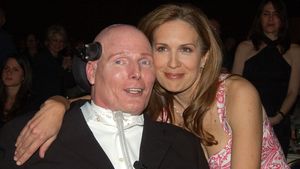













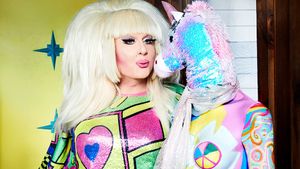




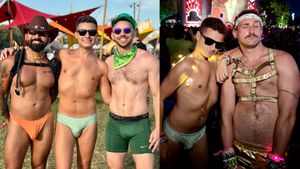
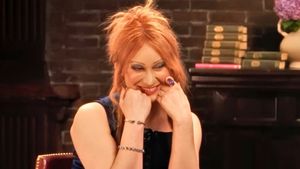

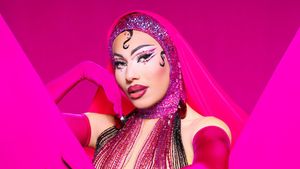
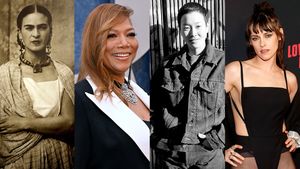


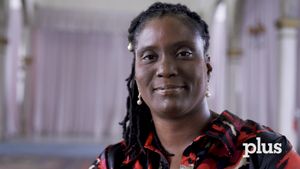
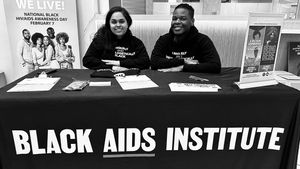










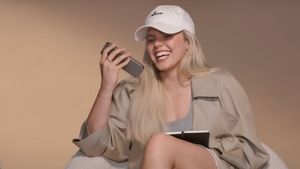






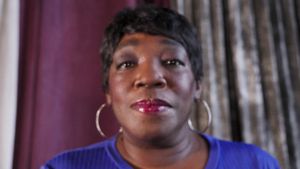














































 Cindy Ord/Getty Images
Cindy Ord/Getty Images

























